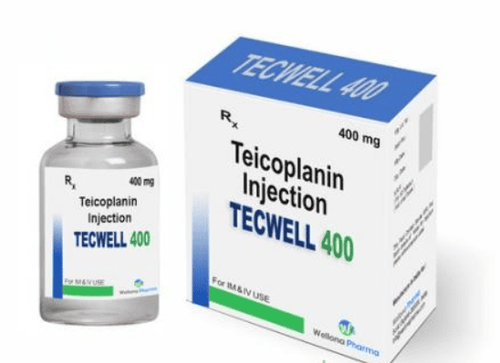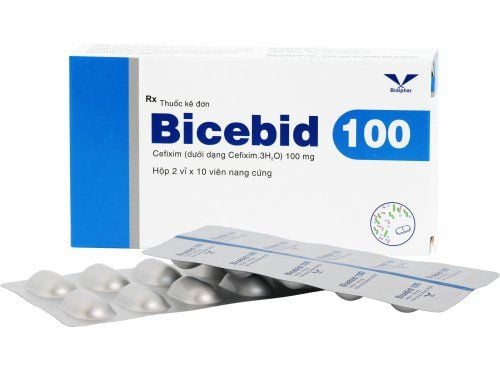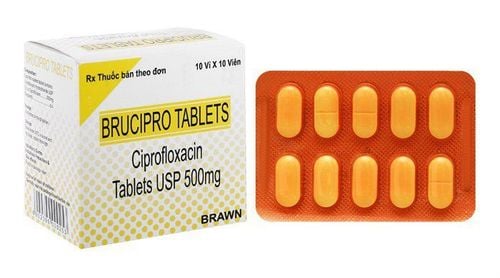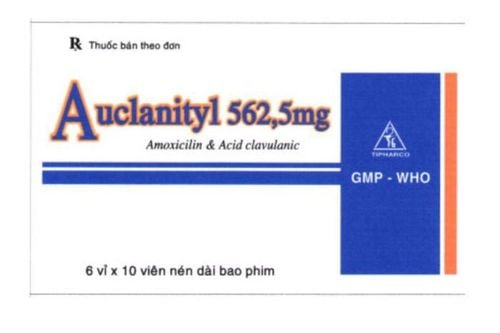This is an automatically translated article.
Drug Cetiam Inj. 1g is used in the treatment of infections of the blood, incision, skin, respiratory, kidney - urinary tract, ... To ensure safety and maximize the effectiveness of treatment, patients need to take the drug. Cetiam Inj. 1g exactly as prescribed by your doctor/pharmacist.
1. What is Cetiam?
Cetiam is an antiparasitic, anti-infective, anti-viral and fungal drug. The drug is prepared in the form of powder for injection, packing specifications: Box of 10 vials of 1g.
Ingredients in the drug Cetiam:
Cefotiam dihydrochloride; Excipients with sufficient drug content.
2. Indications for the use of Cetiam Inj. 1g
Drug Cetiam Inj. 1g is indicated for treatment in the following cases:
Blood infections; Infection of the burn or surgical site; Subcutaneous abscesses, boils; Osteomyelitis ; Purulent arthritis; Tonsillitis; Bronchitis ; Bronchiectasis with signs of infection; Pneumonia; Lung infection; Purulent pleurisy; Cholangitis; Cholecystitis ; Peritonitis; pyelonephritis; Cystitis ; Urethritis; Prostatitis; Meningitis ; Infections inside the uterus; Pelvic inflammatory disease; Tendonitis; Bartholin gland inflammation; otitis media; Sinusitis .
3. Dosage of Cetiam Inj. 1g
Dosage of Cetiam Inj. 1g is recommended as follows:
Adults: Intravenous dose of Cetiam Inj 0.5 - 2g/day, divided into 2 - 4 times; Children: Intravenous dose of Cetiam Inj 40-80mg/kg body weight/day divided into 3-4 times; The dose of Cetiam Inj for the treatment of sepsis in adults can be up to 4g/day; The dose of Cetiam Inj for severe or persistent infections in children may be increased to 160 mg/kg/day; Patients with renal impairment: People with renal failure with creatinine clearance > 16.6ml/min can take the same dose of Cetiam Inj as patients with normal renal function. If creatinine clearance is < 16.6 ml/min, the dose of Cetiam Inj should be reduced to 75% of the dose for patients with normal renal function, at intervals of 6 or 8 hours. Dosage of Cetiam Inj. 1g above is for reference only. Dosage of Cetiam Inj. The specific 1g will depend on the condition and the progression of the disease. To get the dose of Cetiam Inj. 1g is suitable, patients need to consult a doctor / pharmacist.
4. Contraindications to the use of Cetiam Inj. 1g
Do not take Cetiam Inj. 1g for the following subjects:
Patients with a history of shock or hypersensitivity when taking Cefotiam; Contraindicated in patients with a history of allergy to beta-lactam antibiotics.
5. Side effects of the drug Cetiam Inj. 1g
During the use of Cetiam Inj. 1g, patients may experience some of the following side effects:
Shock, drug hypersensitivity such as rash, urticaria, itching or fever; Steven-Johnson's syndrome; Epidermal necrosis. Anemia, granulocytopenia/platelet count; Increased eosinophils; Increases GOT, GPT, LDH, alkaline phosphatase and γ-GTP. Acute renal failure; Intestinal conjunctivitis; Stomachache; Diarrhea; Nausea and vomiting are rare; Anorexic; PIE syndrome ; Stomatitis or candida infection; Vitamin K deficiency makes it difficult for the blood to clot; Vitamin B group deficiency; Neuritis; Headache, dizziness, dizziness. During the course of treatment, if there is any abnormality suspected due to the use of Cetiam Inj. 1g, the patient needs to notify the treating doctor for timely treatment.
The article has provided information about the uses, doses and precautions when using Cetiam Inj. 1g . To ensure safety for your health and maximize the effectiveness of your treatment, you need to use Cetiam Inj. 1g as directed by the doctor.













